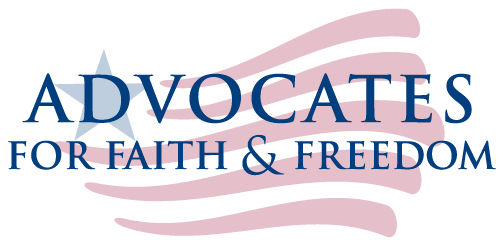RELIGION IN SCHOOL
Students do not give up their individual liberties when they enter the classroom. They are entitled to rights to practice religion in school according to their individual freedoms.
Every year, we see this right to religion in school exemplified in the See You At the Pole (SYATP) celebration, where students gather around the flagpole before classes start to pray for the school, our Nation, and other issues. Almost every year, we hear stories of students being denied their rights to practice their religion in this way at school, so we reach out to the schools to educate them on students’ rights regarding SYATP. These arguments would also defend students right to religion in school for other matters, as well, such as starting up a Bible club on campus. The facts are these:
First, public schools may not disallow students from using school facilities during non- curricular times because of the students’ religious viewpoint. See Good News Club v. Miford Central School,533 U.S. 98, 120-121 (2001). Further, under Morse v. Frederick, 127 U.S 2618, 2620-2621 (2007), students have a right to express their faith on campus so long as it does not “materially and substantially disrupt the work and discipline of the school,” and as long as the school officials do not have a compelling interest to prohibit the speech, such as discouraging drug use. While the Supreme Court did hold that student-led public prayer over a football game speaker system violated the Establishment Clause because the prayer occurred publicly at a school-sponsored game and could be viewed as school endorsement of religion, “there is a crucial difference between government speech endorsing religion, which the Establishment Clause forbids, and private speech endorsing religion, which the Free Speech and Free Exercise Clauses ptotect.” Santa Fe Independent Sch. Dist.,530 U.S. 313, 302 (2000).
Since SYATP is not occurring over the loudspeaker of a school-sponsored activity like a school football game, since SYATP is entirely student-sponsored and student-led, and since students participating in SYATP gather to express pure speech during the non-curricular time of 7:00 AM and are not promoting a harmful activity such as drug use, the students have a right to gather for SYATP.
Second, students have a right to tell other students about SYATP by word of mouth during school hours. This right may not be infringed unless the student “materially and substantially disrupt[s] the work and discipline of the school,” such as a student using speech to promote drug use, Morse v. Frederick.
Further, schools may only put time manner and place restrictions on students advetising SYATP to the extent that they restrict othetr students’ secular advertisements. This means that if a school allows secular groups to advertise by using the school-wide announcement system, school bulletin boards, or other school facilities, the school must give students advertising for SYATP access to the same facilities. If the school refuses to give students seeking to advertise SYATP equal access to their facilities, the school commits viewpoint discrimination and violates the Constitution.
At Advocates for Faith & Freedom, we aggressively defend our students’ fundamental right to religious freedom in school. Please contact us with any questions you might have.
